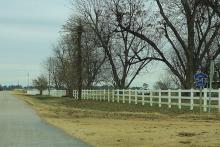Broadband in the Bootheel: Missouri Electric Co-op Delivers
Missouri’s Bootheel is the ultimate southeast corner of the state, extending south and surrounded on three sides by lands in Arkansas, Tennessee, and a smattering of Kentucky. The area’s known for having fertile soil and vibrant agriculture but now that Pemiscot-Dunklin Electric Cooperative is deploying Fiber-to-the-Home (FTTH), it's also becoming known for high-quality Internet access.
The Region and Lack of Connectivity
Jack Davis has worked in several fields. His tech career started when most people in the area reached the Internet via dial-up connections; at the time he worked as a network administrator for a local dial-up ISP in the 1990s. His second career was in agriculture and now he’s back in the tech field. Davis’s multiple work experiences have given him insight into the increasing broadband needs of rural residents who either farm or work in some other aspect of the agriculture industry.
When Davis went back into tech, he joined Pemiscot-Dunklin because the electric cooperative, which had never had IT staff before, needed to fill a long-existing personnel gap. With approximately 8,800 connected meters, the cooperative is a modest-sized organization. Approximately 20 percent of their load goes toward irrigation, revealing the important role agriculture plays in the region. Internet access in rural areas is limited to fixed wireless. Cooperative members who used to subscribe to the wireless service typically found top speeds were around 3 - 4 Megabits per second (Mbps) download and much slower upload speeds.
Time for an Upgrade



